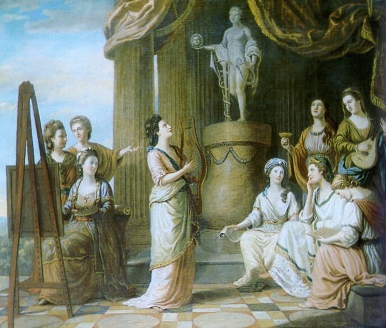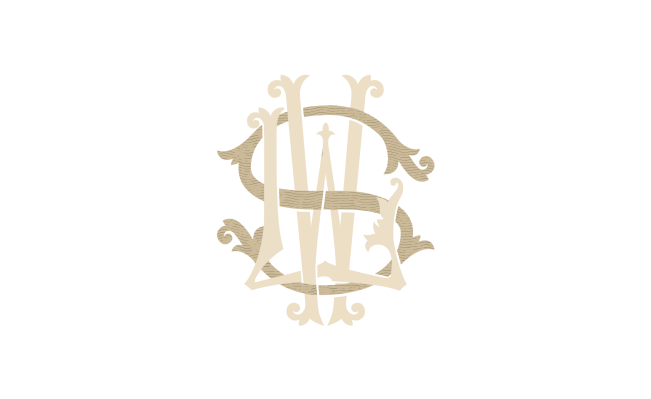
What on Earth is a “Bluestocking”?
In mid-eighteenth-century England, a group of aristocratic women who greatly valued intellectual life held gatherings—called salons—that featured serious conversation on literature, philosophy, architecture, art, history, and current events. These salons were an alternative to conventional social gatherings, at which intellectual conversation was enjoyed exclusively by the men while the ladies were sent off to the parlor for tea and embroidery.
Often, the hostess of a salon would invite male scholars, known as men of letters, to give lectures at their meetings. In fact, the nickname bluestocking society possibly originated with one such invitation. According to an anecdote, Benjamin Stillingfleet, a distinguished scholar, was invited to contribute to a salon, but he initially declined because he didn’t own high-society attire. He was given permission to attend wearing his blue stockings—the blue worsted stockings commonly worn by working men, perhaps the equivalent of modern blue jeans. James Boswell writes:
One of the most eminent members of those societies, when they first commenced, was Mr. Stillingfleet, whose dress was remarkably grave, and in particular it was observed, that he wore blue stockings. Such was the excellence of his conversation, that his absence was felt as so great a loss, that it used to be said, “We can do nothing without the blue stockings;” and thus by degrees the title was established. 1
Although the term bluestocking was sometimes used satirically to refer to these counter-cultural women scholars who actively pursued the life of the mind (too much education was considered unfashionable for a female), it was more generally applied to all who participated in such salons, including revered scholar Dr. Samuel Johnson, statesman and philosopher Edmund Burke, and the first president of the Royal Academy and prominent artist, Sir Joshua Reynolds.
Very early on, bluestockings included devoutly Christian women such as Hannah More (1745-1833), a prolific writer and friend of the great abolitionist William Wilberforce. She was renowned for her efforts to educate the poor as well as for books such as Strictures on the Modern System of Female Education (1799). She penned a poem entitled “The Bas Bleu, or Conversation,” which provides a glimpse into the ethos of the original bluestocking societies. 2
1 James Boswell, The Life of Samuel Johnson (New York: Penguin, 2008), 823.
2 Boswell mentions More and her poem in his brief discussion of the bluestockings.
